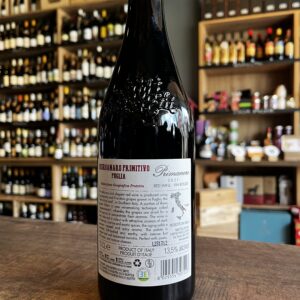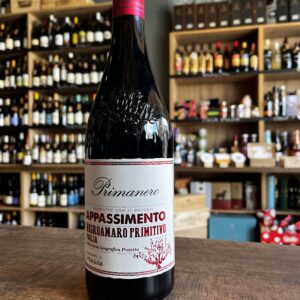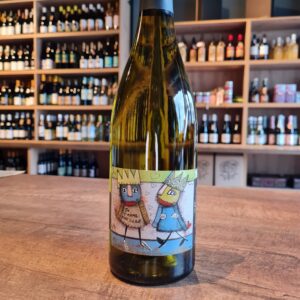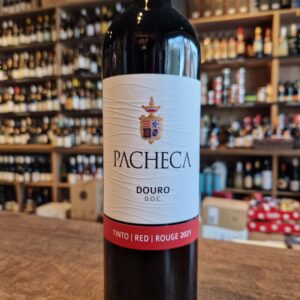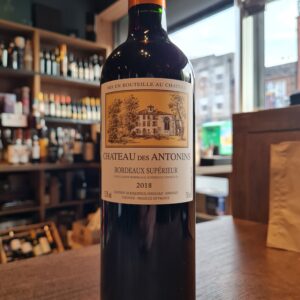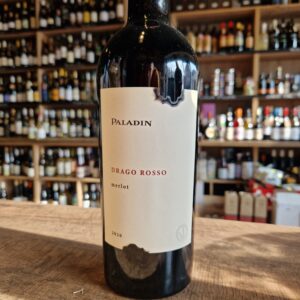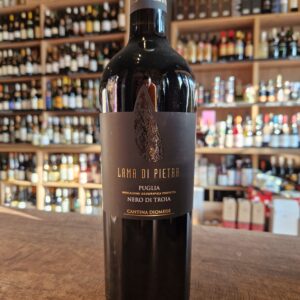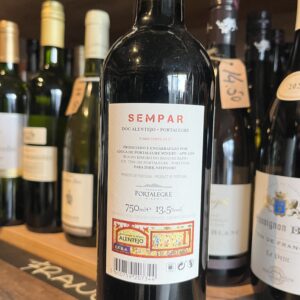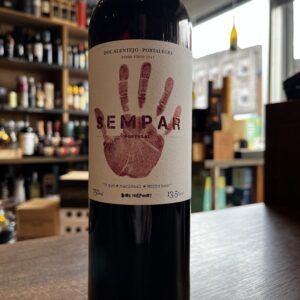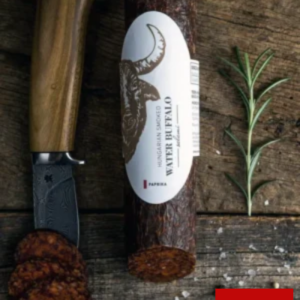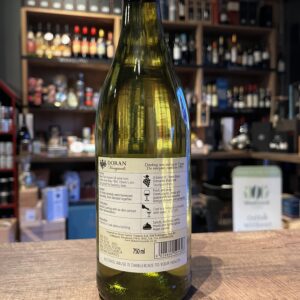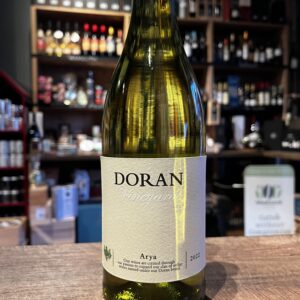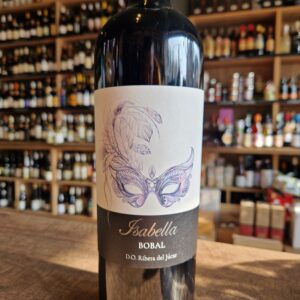-
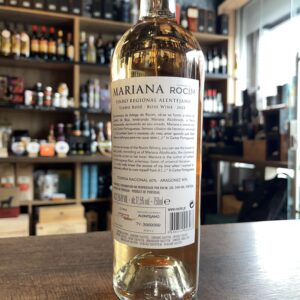
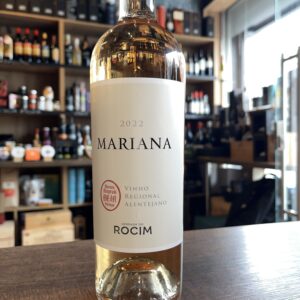 Rocim is the owner of Herdade do Rocim and Vale da Mata. Today, this brand is renowned for the quality of its wine and Cellar. Speaking of its history is speaking of a dream and therefore, it means speaking of the present and future. Because dreams are endless. The “Mariana” Rose is a young and cheerful wine, with generous fruit, freshness and aromatic richness, which reflect the region´s charm. Produced from Touriga Nacional and Aragonez varieties.
Rocim is the owner of Herdade do Rocim and Vale da Mata. Today, this brand is renowned for the quality of its wine and Cellar. Speaking of its history is speaking of a dream and therefore, it means speaking of the present and future. Because dreams are endless. The “Mariana” Rose is a young and cheerful wine, with generous fruit, freshness and aromatic richness, which reflect the region´s charm. Produced from Touriga Nacional and Aragonez varieties. -
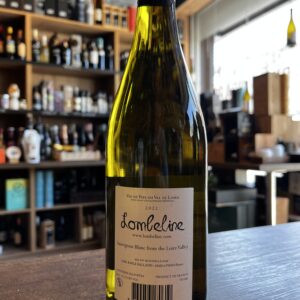
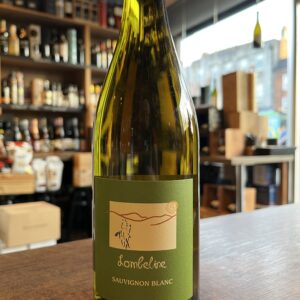 This estate spans a modest 9 hectares, with 1 hectare located in Sancerre and the remaining 8 in the Coteaux du Giennois. Emile's vineyard holdings in the Giennois region are situated in the picturesque villages of Bonny-sur-Loire and Beaulieu-sur-Loire, where the vineyards gently ascend from the banks of the Loire River. It is from these calcareous soils, enriched with underlying layers of silex and clay, that Emile crafts the wines
This estate spans a modest 9 hectares, with 1 hectare located in Sancerre and the remaining 8 in the Coteaux du Giennois. Emile's vineyard holdings in the Giennois region are situated in the picturesque villages of Bonny-sur-Loire and Beaulieu-sur-Loire, where the vineyards gently ascend from the banks of the Loire River. It is from these calcareous soils, enriched with underlying layers of silex and clay, that Emile crafts the wines -
 The Le Rime appears pale yellow with green highlights, with intense aromas of green fruit followed by zippy citrus on the nose. The palate is fresh and lively with ripe pear and juicy green apple in abundance, finishing clean and full with persistent fruit and citrus cream, particularly fetching but do not overchill and allow to open in the glass. Best consumed young and would be ideal with fresh fish and summer salads.
The Le Rime appears pale yellow with green highlights, with intense aromas of green fruit followed by zippy citrus on the nose. The palate is fresh and lively with ripe pear and juicy green apple in abundance, finishing clean and full with persistent fruit and citrus cream, particularly fetching but do not overchill and allow to open in the glass. Best consumed young and would be ideal with fresh fish and summer salads. -
Out of stock
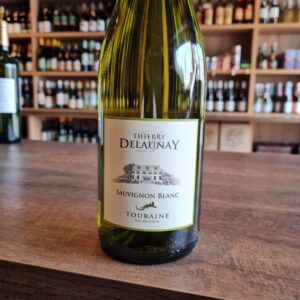 Touraine is the savvy place to look if you’re after a Sauvignon blanc which combines great value with great flavour. The Loire is Sauvignon Blanc’s homeland. So it’s no surprise that Loire native, Thierry Delaunay, is passionate about the grape. Decades of his family making wine in the region means he has the pick of the crop when it comes to choosing grapes for his wines. He looks for the best grapes from the best pockets of vines in Touraine – and the results speak for themselves. This Sauvignon is seriously refreshing, seriously citrusy, and seriously good value. You’ll find nothing finer to pair with a goat’s cheese tart. And its more restrained flavour profile makes it a perfect party wine. Santé.
Touraine is the savvy place to look if you’re after a Sauvignon blanc which combines great value with great flavour. The Loire is Sauvignon Blanc’s homeland. So it’s no surprise that Loire native, Thierry Delaunay, is passionate about the grape. Decades of his family making wine in the region means he has the pick of the crop when it comes to choosing grapes for his wines. He looks for the best grapes from the best pockets of vines in Touraine – and the results speak for themselves. This Sauvignon is seriously refreshing, seriously citrusy, and seriously good value. You’ll find nothing finer to pair with a goat’s cheese tart. And its more restrained flavour profile makes it a perfect party wine. Santé. -
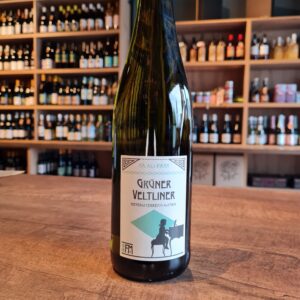 Gruner Veltliner is Austria’s most important indigenous grape and up until the 1990s it was relatively unheard of. Gruner Veltliner has many charms, one of them being the consistency of the quality and the flavour profile; it always delivers what it says on the tin. Ferdinand Mayr is a musician turned winemaker and his organic wines are singing with flavour and intensity. Whoever says Grüner Veltliner says Austria and vice versa. This version of Ferdinand Mayr is accessible and it charms you right away. Exuberant, lively nose of citrus, apple and white pepper. On the palate, the ripe fruit and spiciness create a pleasant tension with the acidity. Crispy and ripe, as if you were biting into a juicy apple. Flavor and spiciness characterize this wine. Fantastic with Japanese or Thai cuisine.
Gruner Veltliner is Austria’s most important indigenous grape and up until the 1990s it was relatively unheard of. Gruner Veltliner has many charms, one of them being the consistency of the quality and the flavour profile; it always delivers what it says on the tin. Ferdinand Mayr is a musician turned winemaker and his organic wines are singing with flavour and intensity. Whoever says Grüner Veltliner says Austria and vice versa. This version of Ferdinand Mayr is accessible and it charms you right away. Exuberant, lively nose of citrus, apple and white pepper. On the palate, the ripe fruit and spiciness create a pleasant tension with the acidity. Crispy and ripe, as if you were biting into a juicy apple. Flavor and spiciness characterize this wine. Fantastic with Japanese or Thai cuisine. -
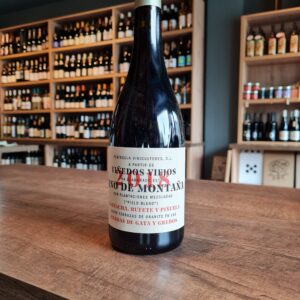 Vinos de Montaña is from a range of mountain wines on high-altitude vineyards in Sierra de Gredos and other historic growing areas in the Sistema Central, the mountain chain that divides the Iberian Peninsula in its Northern and Southern halves. Based mostly on very old Garnacha vines on granite soil, the wines are perfumed, delicate and fresh, displaying the character of their vineyard parcels and villages. This organic wine even though is from a recent created bodega/company, is from old vines revived in the mountain where wine was produced for decades. The Spanish market seemed to picked up on it, as it is becoming increasingly popular with the new enthusiastic wine drinkers generation. Recommended pairing with grilled vegetables, sausages, roasted meats, small game, cured cheeses.
Vinos de Montaña is from a range of mountain wines on high-altitude vineyards in Sierra de Gredos and other historic growing areas in the Sistema Central, the mountain chain that divides the Iberian Peninsula in its Northern and Southern halves. Based mostly on very old Garnacha vines on granite soil, the wines are perfumed, delicate and fresh, displaying the character of their vineyard parcels and villages. This organic wine even though is from a recent created bodega/company, is from old vines revived in the mountain where wine was produced for decades. The Spanish market seemed to picked up on it, as it is becoming increasingly popular with the new enthusiastic wine drinkers generation. Recommended pairing with grilled vegetables, sausages, roasted meats, small game, cured cheeses. -
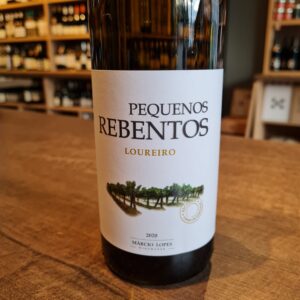 Márcio Lopes studied as an engineer, but cut his winemaking teeth working for two years with Vinho Verde master Anselmo Mendes in Melgaço. He then travelled to Australia where he made wine in Rutherglen and Tasmania, another cool climate region. He returned to Portugal in 2010 to start his own projects, including Pequenos Rebentos in Vinho Verde. He initially started working with Alvarinho and Trajadura (known as Albariño and Treixadura in Spain) from the sub-regions of Monção and Melgaço. These areas have a very particular microclimate, with slightly less Atlantic influence than the rest of the region - winters are cold with moderate rainfall and summers are hot and dry. During 2016 he also started to grow and vinify local varietals Loureiro. He now farms 5ha of vineyards, planted on granite, as well as buying some grapes from selected growers who also work in the same sustainable way and without herbicides. His winemaking is low intervention, he ferments using natural yeasts, and like many of our producers he believes that if the fruit is good enough he will make quality wines with balance that reflect his terroir. This seems to be working - his wines are distinctively fresh and vibrant, showing bright and clear typical variety aromas.
Márcio Lopes studied as an engineer, but cut his winemaking teeth working for two years with Vinho Verde master Anselmo Mendes in Melgaço. He then travelled to Australia where he made wine in Rutherglen and Tasmania, another cool climate region. He returned to Portugal in 2010 to start his own projects, including Pequenos Rebentos in Vinho Verde. He initially started working with Alvarinho and Trajadura (known as Albariño and Treixadura in Spain) from the sub-regions of Monção and Melgaço. These areas have a very particular microclimate, with slightly less Atlantic influence than the rest of the region - winters are cold with moderate rainfall and summers are hot and dry. During 2016 he also started to grow and vinify local varietals Loureiro. He now farms 5ha of vineyards, planted on granite, as well as buying some grapes from selected growers who also work in the same sustainable way and without herbicides. His winemaking is low intervention, he ferments using natural yeasts, and like many of our producers he believes that if the fruit is good enough he will make quality wines with balance that reflect his terroir. This seems to be working - his wines are distinctively fresh and vibrant, showing bright and clear typical variety aromas. -
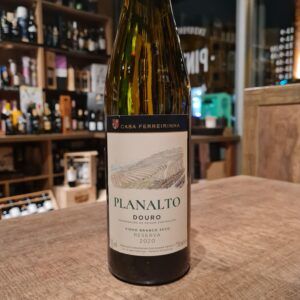 Planalto is one of the biggest references of white wine in the Douro Demarcated Region, fruit of the in-depth studies carried out over the years, the careful choice of the grape varieties that compose it and the use of the best winemaking technology in its production. This white blend comes from high-altitude vineyards above the river Douro. The soil in the Douro Valley is schistous; a slate-like metamorphic rock that fractures vertically - allowing vine roots to dig deep to access water and nutrients to sustain them through the hot Douro summers. The poor quality of the soil forces the grapes to produce low yields of grapes with a great concentration of flavour. The grapes were harvested by hand and were selected for their balance between flavour intensity and freshness. Ideal to accompany fish, seafood and white meat dishes.
Planalto is one of the biggest references of white wine in the Douro Demarcated Region, fruit of the in-depth studies carried out over the years, the careful choice of the grape varieties that compose it and the use of the best winemaking technology in its production. This white blend comes from high-altitude vineyards above the river Douro. The soil in the Douro Valley is schistous; a slate-like metamorphic rock that fractures vertically - allowing vine roots to dig deep to access water and nutrients to sustain them through the hot Douro summers. The poor quality of the soil forces the grapes to produce low yields of grapes with a great concentration of flavour. The grapes were harvested by hand and were selected for their balance between flavour intensity and freshness. Ideal to accompany fish, seafood and white meat dishes. -
Out of stock
 Villa Raiano was founded in 1996 in the old factories of the Basso family's oil mill, owner of the company in the Raiano hamlet of the municipality of Serino (AV). Built in 2009, the is structure perfectly integrated into the surrounding environment, surrounded by vineyards and woods. On top of it a panoramic terrace overlooking a wonderful valley carved by the river Sabato which descends proudly from Monte Terminio. This delicious summer wine from the extreme south of Italy makes you long for Italy. A delicious, light-footed summer wine with a sultry taste of honey, flowers and fresh notes of citrus fruits. The Falanghina grape is still relatively unknown in the Ireland, but in Italy a guarantee for a smooth summer wine that can be drunk on it's own or over lunch.The artisan winemakers of Villa Raiano are behind this fantastic Virgo Falanghina, you can expect high quality. In addition, all grapes are picked by hand by Gabrizia and her brothers. And you can taste it! A delicious traditional wine that is made with the utmost care in a sustainable way.
Villa Raiano was founded in 1996 in the old factories of the Basso family's oil mill, owner of the company in the Raiano hamlet of the municipality of Serino (AV). Built in 2009, the is structure perfectly integrated into the surrounding environment, surrounded by vineyards and woods. On top of it a panoramic terrace overlooking a wonderful valley carved by the river Sabato which descends proudly from Monte Terminio. This delicious summer wine from the extreme south of Italy makes you long for Italy. A delicious, light-footed summer wine with a sultry taste of honey, flowers and fresh notes of citrus fruits. The Falanghina grape is still relatively unknown in the Ireland, but in Italy a guarantee for a smooth summer wine that can be drunk on it's own or over lunch.The artisan winemakers of Villa Raiano are behind this fantastic Virgo Falanghina, you can expect high quality. In addition, all grapes are picked by hand by Gabrizia and her brothers. And you can taste it! A delicious traditional wine that is made with the utmost care in a sustainable way. -
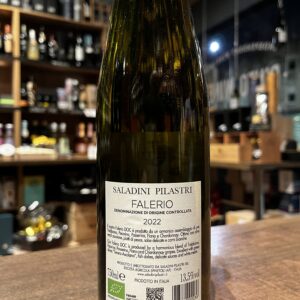
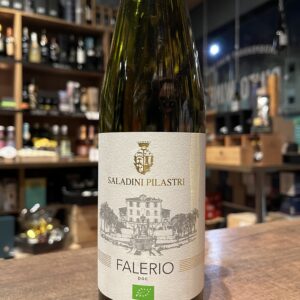 Saladini Pilastri is located in Spinetoli, in the Marche region of Italy . The history of the Counts Saladini Pilastri, a noble family from Ascoli Piceno, dates back to the early 1000s, but it is only for around 300 years that the family has been dedicated to wine production. Its 320 hectare wine estate is located in the heart of the Rosso Piceno production area. From the 1970s, new vines were planted; The current winery was built next to the splendid 15th century country house “Vigna Palazzi”, which originally served as a production site, so that all production could be kept in one place. The vineyard has been certified in organic farming since 1994. The climate here is Mediterranean, with hot, dry summers tempered by the maritime influence of the Adriatic Sea only 8km away from the vineyards. All the farming is organic and the winery is equipped with all the latest wine-making mod cons, helping speeding up the complex time of production and maintain quality. In true Italian style-Great wine with great food it helps that at the heart of the estate is a plush mansion house with a sweet swimming pool!. True quality of life. If I wasn't Portuguese, Italy would be where I would retire. Food-friendly as they come, its easy-going qualities match well with antipasti or even creamy pasta dishes but especially fish orientated dishes. Goditi il Vino!
Saladini Pilastri is located in Spinetoli, in the Marche region of Italy . The history of the Counts Saladini Pilastri, a noble family from Ascoli Piceno, dates back to the early 1000s, but it is only for around 300 years that the family has been dedicated to wine production. Its 320 hectare wine estate is located in the heart of the Rosso Piceno production area. From the 1970s, new vines were planted; The current winery was built next to the splendid 15th century country house “Vigna Palazzi”, which originally served as a production site, so that all production could be kept in one place. The vineyard has been certified in organic farming since 1994. The climate here is Mediterranean, with hot, dry summers tempered by the maritime influence of the Adriatic Sea only 8km away from the vineyards. All the farming is organic and the winery is equipped with all the latest wine-making mod cons, helping speeding up the complex time of production and maintain quality. In true Italian style-Great wine with great food it helps that at the heart of the estate is a plush mansion house with a sweet swimming pool!. True quality of life. If I wasn't Portuguese, Italy would be where I would retire. Food-friendly as they come, its easy-going qualities match well with antipasti or even creamy pasta dishes but especially fish orientated dishes. Goditi il Vino! -
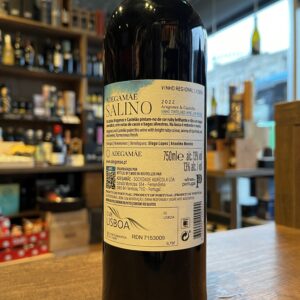
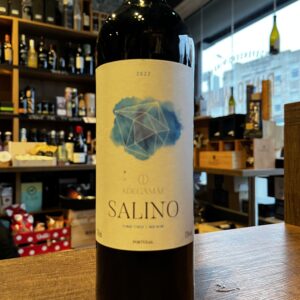 Salino is from north from Lisbon (Torres Vedras) and just a step away from the ocean, AdegaMãe brings out the best of a terroir strongly influenced by the prevailing sea breezes, standing out for its Atlantic-inspired wines, brimming with character, freshness and minerality. The winery was built by the Alves family, founder of Riberalves Group, AdegaMãe is born as a tribute from the men to the family’s matriarch, Manuela Alves. On this particular project, 2 star winemakers were asked to do an everydays wine that brings quality and immediate expression to the palate. Pair it with Charcuterie of all sorts, red meats and stews
Salino is from north from Lisbon (Torres Vedras) and just a step away from the ocean, AdegaMãe brings out the best of a terroir strongly influenced by the prevailing sea breezes, standing out for its Atlantic-inspired wines, brimming with character, freshness and minerality. The winery was built by the Alves family, founder of Riberalves Group, AdegaMãe is born as a tribute from the men to the family’s matriarch, Manuela Alves. On this particular project, 2 star winemakers were asked to do an everydays wine that brings quality and immediate expression to the palate. Pair it with Charcuterie of all sorts, red meats and stews -
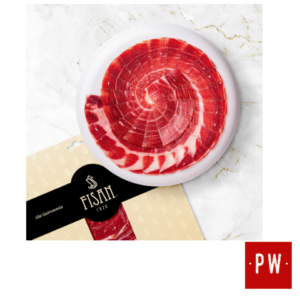 One of FISAN’s most prized products in a practical format to delight your palate with the most extraordinary nuances of 100% Iberico Bellota Ham Alta Gastronomia at any time and place. Its secret: the selection from the earliest stage of the best pure Iberico breed pigs, patience and curing in our natural cellars in Guijuelo, which leads to the best Pata Negra Ham you will ever remember. Only the most exceptional pieces qualify as Alta Gastronomia.
One of FISAN’s most prized products in a practical format to delight your palate with the most extraordinary nuances of 100% Iberico Bellota Ham Alta Gastronomia at any time and place. Its secret: the selection from the earliest stage of the best pure Iberico breed pigs, patience and curing in our natural cellars in Guijuelo, which leads to the best Pata Negra Ham you will ever remember. Only the most exceptional pieces qualify as Alta Gastronomia. -
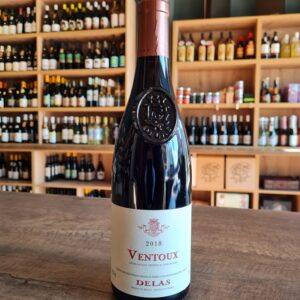 Delas Frères Ventoux is a red wine blend made with grapes from the south eastern region of the Rhône winegrowing region of France. Delas Frères are one of the most prestigious Rhone wine producers and make superb wines, from a wide selection of appellations, in both the northern and southern Rhône including Hermitage, Crozes-Hermitage, Châteauneuf-du-Pape, Côte Rôtie, Condrieu and Côtes-du-Rhône. The company was founded in 1835 when Charles Audibert and Philippe Delas bought Maisons Junique, a 40-year-old winery which they renamed Audibert & Delas. Philippe Delas had two sons, Henri and Florentin. The latter married the daughter of Charles Audibert, further strengthening the bond between the two families. In 1924, the brothers succeeded to the founders and changed the name of the house to Delas Frères. The company grew and in 1981 relocated to the its current premises in Saint Jean de Muzols, a small village located two kilometers north of Tournon in the Saint Joseph appellation. In 1993 Delas Frères became part of the Champagne Louis Roederer group. Delas Frères Ventoux is a blend of Grenache and Syrah grapes which are sourced from the communes of Mazan and Goult from vineyards which stretch out along the left bank of the Rhône river, around the limestone outcrop of the Mount Ventoux. The Grenache grapes are fermented in stainless steel vats with a daily pumping over to allow gentle extraction of the phenolic components. The Syrah is sometimes left on the stems in order to fully express its characteristic fruit aromas. The two components are blended before they wines is matured for 6 to 8 months in Delas’ air-conditioned winery before bottling.
Delas Frères Ventoux is a red wine blend made with grapes from the south eastern region of the Rhône winegrowing region of France. Delas Frères are one of the most prestigious Rhone wine producers and make superb wines, from a wide selection of appellations, in both the northern and southern Rhône including Hermitage, Crozes-Hermitage, Châteauneuf-du-Pape, Côte Rôtie, Condrieu and Côtes-du-Rhône. The company was founded in 1835 when Charles Audibert and Philippe Delas bought Maisons Junique, a 40-year-old winery which they renamed Audibert & Delas. Philippe Delas had two sons, Henri and Florentin. The latter married the daughter of Charles Audibert, further strengthening the bond between the two families. In 1924, the brothers succeeded to the founders and changed the name of the house to Delas Frères. The company grew and in 1981 relocated to the its current premises in Saint Jean de Muzols, a small village located two kilometers north of Tournon in the Saint Joseph appellation. In 1993 Delas Frères became part of the Champagne Louis Roederer group. Delas Frères Ventoux is a blend of Grenache and Syrah grapes which are sourced from the communes of Mazan and Goult from vineyards which stretch out along the left bank of the Rhône river, around the limestone outcrop of the Mount Ventoux. The Grenache grapes are fermented in stainless steel vats with a daily pumping over to allow gentle extraction of the phenolic components. The Syrah is sometimes left on the stems in order to fully express its characteristic fruit aromas. The two components are blended before they wines is matured for 6 to 8 months in Delas’ air-conditioned winery before bottling. -
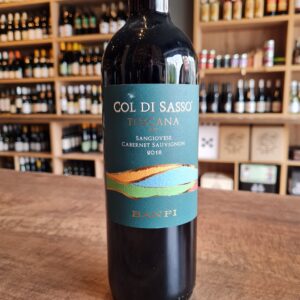 Col di Sasso meaning Stony Hill – the blend of Cabernet Sauvignon and Sangiovese cultivated on the most rocky and impervious slopes of the Banfi estate in Montalcino. A young, but intense wine. The color is ruby red with purple shades. The wine shows intense and fruity scents of black currant, cherry and other red fruits. The structure is soft and magnificently sustained by a good acidity, resulting from the sweet and mellow tannins. The finish is pleasant and with a balanced complexity.
Col di Sasso meaning Stony Hill – the blend of Cabernet Sauvignon and Sangiovese cultivated on the most rocky and impervious slopes of the Banfi estate in Montalcino. A young, but intense wine. The color is ruby red with purple shades. The wine shows intense and fruity scents of black currant, cherry and other red fruits. The structure is soft and magnificently sustained by a good acidity, resulting from the sweet and mellow tannins. The finish is pleasant and with a balanced complexity. -
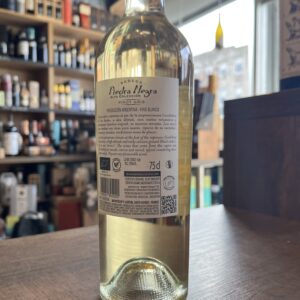
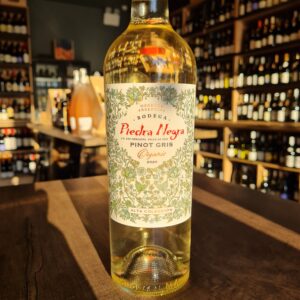 The Alta Colleción Pinot Gris from Bodega Piedra Negra can be considered an excellent ambassador of the unique Lurton wine style. A clear fruit, seductive grace and an unmistakable personality characterise this pure Pinot Gris.This wine fills the glass with a bright straw yellow with greenish reflections. The fragrant bouquet unfolds fresh fruity, aromatic notes of white peach and pear. The fresh, juicy taste brings lots of fruit and a lively acidity. Despite everything, this Argentine white wine is soft, full-bodied and wonderfully balanced, making it a racy and charming seducer. In the finish, the beautiful aroma lasts for a long time. This dry white wine from Argentina goes excellently with pasta with fish and seafood, monkfish with provencal herbs and spices or roasted pork.
The Alta Colleción Pinot Gris from Bodega Piedra Negra can be considered an excellent ambassador of the unique Lurton wine style. A clear fruit, seductive grace and an unmistakable personality characterise this pure Pinot Gris.This wine fills the glass with a bright straw yellow with greenish reflections. The fragrant bouquet unfolds fresh fruity, aromatic notes of white peach and pear. The fresh, juicy taste brings lots of fruit and a lively acidity. Despite everything, this Argentine white wine is soft, full-bodied and wonderfully balanced, making it a racy and charming seducer. In the finish, the beautiful aroma lasts for a long time. This dry white wine from Argentina goes excellently with pasta with fish and seafood, monkfish with provencal herbs and spices or roasted pork. -
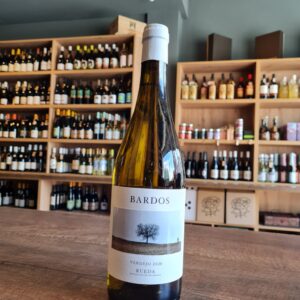 Bardos Verdejo is a wine made from 100% Verdejo from vineyards that are 20-25 years old, located in Rueda, at more than 700 metres of altitude on stony soils. The harvest is carried out at night, at temperatures below 15ºC. The fermentation is done with local yeasts at a controlled temperature and the wine rests on its lees for at least 4 months, gaining complexity and texture. On the nose, the intense aromas of fruit such as white peach combine with cut grass, citrus, balsamic and mineral notes. In the mouth it has a good volume and persistence, well integrated acidity and a characteristic aniseed aftertaste, typical of the grape. Really a high quality example of this native Spanish variety. Excellent with light bites, starters, salads and white fish. All of the wines by De Bardos are crafted by hand in a fully artisan manner.
Bardos Verdejo is a wine made from 100% Verdejo from vineyards that are 20-25 years old, located in Rueda, at more than 700 metres of altitude on stony soils. The harvest is carried out at night, at temperatures below 15ºC. The fermentation is done with local yeasts at a controlled temperature and the wine rests on its lees for at least 4 months, gaining complexity and texture. On the nose, the intense aromas of fruit such as white peach combine with cut grass, citrus, balsamic and mineral notes. In the mouth it has a good volume and persistence, well integrated acidity and a characteristic aniseed aftertaste, typical of the grape. Really a high quality example of this native Spanish variety. Excellent with light bites, starters, salads and white fish. All of the wines by De Bardos are crafted by hand in a fully artisan manner. -
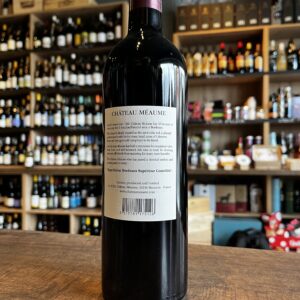
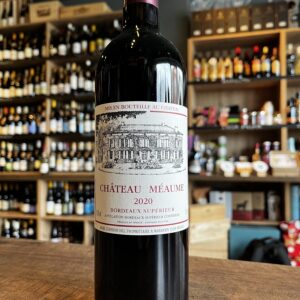 Most of us know Roald Dahl's novels, I for one have read them countless times. Firstly to my eldest and now, once in while I try with the middle one, even though he is still a bit young for those books. He is only 4 my wife says! They are just fun to read. To my surprise, after deciding to bring Château Méaume Bordeaux Supérieur to our Pinto Wines portfolio I came across that it was Roald Dahl's favourite wine and per his own words ''simply delicious''. Well I could not put it better myself. It is a fantastic wine, with superb quality at this price point and what some would call a ''Big little wine.'' Unpretentious especially being French and carries a lot with it. It has a warm, expressive black fruits with a serious, rustic, spicy structure. A hint of exotic perfume on the nose, with a luscious, very ripe blackberry and damson palate.80% merlot, with cabernets franc and sauvignon adding a rich, chewy texture. Very more-ish, with freshness, and great balance.Château Méaume, owned by English couple Alan and Sue Johnson-Hill since 1980, is an historic property just 10 miles from the famous vineyards of St-Emilion and Pomerol. The 2016 Vintage is one of the best produced after the 2000's and critics were fast to praise the 2018. Cheers Roald!
Most of us know Roald Dahl's novels, I for one have read them countless times. Firstly to my eldest and now, once in while I try with the middle one, even though he is still a bit young for those books. He is only 4 my wife says! They are just fun to read. To my surprise, after deciding to bring Château Méaume Bordeaux Supérieur to our Pinto Wines portfolio I came across that it was Roald Dahl's favourite wine and per his own words ''simply delicious''. Well I could not put it better myself. It is a fantastic wine, with superb quality at this price point and what some would call a ''Big little wine.'' Unpretentious especially being French and carries a lot with it. It has a warm, expressive black fruits with a serious, rustic, spicy structure. A hint of exotic perfume on the nose, with a luscious, very ripe blackberry and damson palate.80% merlot, with cabernets franc and sauvignon adding a rich, chewy texture. Very more-ish, with freshness, and great balance.Château Méaume, owned by English couple Alan and Sue Johnson-Hill since 1980, is an historic property just 10 miles from the famous vineyards of St-Emilion and Pomerol. The 2016 Vintage is one of the best produced after the 2000's and critics were fast to praise the 2018. Cheers Roald! -
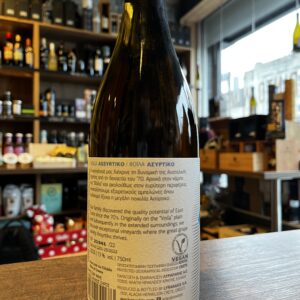
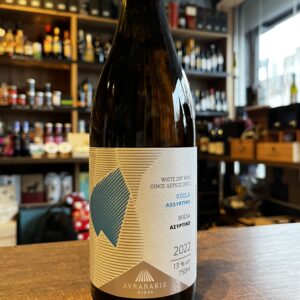 Anyone that has been to Greece or has interest in wines have come by the grape Assyrtiko . In the last few years, wines from Greece, in particularly this indigenous grape, have gotten the status as a world-class wine and prices have begun to rise especially from the Santorini region. This Vegan Assyrtiko from the Lyrarakis estate is one of them and it is still in the affordable range and fortunately, your everyday Assyrtiko needs can still be catered for. Being from east Crete rather than Santorini means prices are still competitive. Think down the lines of getting a wine from the Touraine region rather than the heart of the Loire Valley. Lyrarakis on Crete are a brilliant winery with a focus on indigenous Greek varieties. Their rendition of Assyrtiko is broader and more approachable than some of the tightly-wound examples on Santorini, but it's no less drinkable for that. It is in fact an ideal place to grow the white grape Assyrtiko. Both the Mediterranean breezes and the altitude of the Lyrarakis vineyards allows the grapes to have a much longer ripening period, preserving the grapes aromatics and acidity resulting in a wine with wonderful floral freshness, crisp citrus notes and a delicate mineral finish. Yamas!
Anyone that has been to Greece or has interest in wines have come by the grape Assyrtiko . In the last few years, wines from Greece, in particularly this indigenous grape, have gotten the status as a world-class wine and prices have begun to rise especially from the Santorini region. This Vegan Assyrtiko from the Lyrarakis estate is one of them and it is still in the affordable range and fortunately, your everyday Assyrtiko needs can still be catered for. Being from east Crete rather than Santorini means prices are still competitive. Think down the lines of getting a wine from the Touraine region rather than the heart of the Loire Valley. Lyrarakis on Crete are a brilliant winery with a focus on indigenous Greek varieties. Their rendition of Assyrtiko is broader and more approachable than some of the tightly-wound examples on Santorini, but it's no less drinkable for that. It is in fact an ideal place to grow the white grape Assyrtiko. Both the Mediterranean breezes and the altitude of the Lyrarakis vineyards allows the grapes to have a much longer ripening period, preserving the grapes aromatics and acidity resulting in a wine with wonderful floral freshness, crisp citrus notes and a delicate mineral finish. Yamas! -
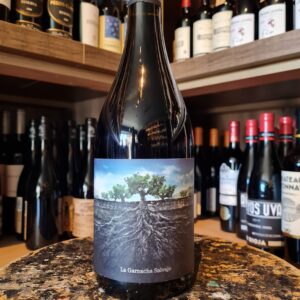 There's a lovely off the beaten track mountain wilderness (salvaje means wild) to this old-vine Garnacha (aka Grenache), one of six under the the creative Vintae's Proyecto Garnachas banner that showcase the grape variety from old vineyards in different areas of the Ebro Valley in northeast Spain. Like Gamay and Zinfandel, the old vines of Grenache are a timeless wonder. They are the Clint Eastwood of vitis vinifera: gnarled by age with a tough-as-nails exterior and no sign of retirement on the horizon. What they lack in quantity, they make up for in quality: grape clusters from old-vine Grenache (think 60-100 years old) can create wines of supple fruit, spicy character and rocket-fueled energy. This one is no exception, the Salvaje vineyards lie on rocky soils at 820m above sea level, on the north face of the Moncayo massif mountain chain, where Navarra and Aragón meet and the Atlantic influence brings mouthwatering freshness and clarity to the generous raspberry, wild herb and pepper flavours this wine induces. It doesn't need food, but it's very accommodating: spot on with roast peppers, aubergine, tomatoes and onions and with spicy sausages such as chorizo. It would be equally good with roast root vegetables, slow-roast lamb or pork, baked spiced duck legs or a ham joint and would make a good barbecue all-rounder.
There's a lovely off the beaten track mountain wilderness (salvaje means wild) to this old-vine Garnacha (aka Grenache), one of six under the the creative Vintae's Proyecto Garnachas banner that showcase the grape variety from old vineyards in different areas of the Ebro Valley in northeast Spain. Like Gamay and Zinfandel, the old vines of Grenache are a timeless wonder. They are the Clint Eastwood of vitis vinifera: gnarled by age with a tough-as-nails exterior and no sign of retirement on the horizon. What they lack in quantity, they make up for in quality: grape clusters from old-vine Grenache (think 60-100 years old) can create wines of supple fruit, spicy character and rocket-fueled energy. This one is no exception, the Salvaje vineyards lie on rocky soils at 820m above sea level, on the north face of the Moncayo massif mountain chain, where Navarra and Aragón meet and the Atlantic influence brings mouthwatering freshness and clarity to the generous raspberry, wild herb and pepper flavours this wine induces. It doesn't need food, but it's very accommodating: spot on with roast peppers, aubergine, tomatoes and onions and with spicy sausages such as chorizo. It would be equally good with roast root vegetables, slow-roast lamb or pork, baked spiced duck legs or a ham joint and would make a good barbecue all-rounder. -
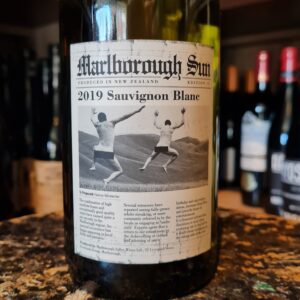 Fantastic New Zealand Sauvignon that will tick all the boxes. The extraordinary label of this wine and the bright recognizable taste have created a direct connection between the Marlborough Sun brand and consumers all over the world. With the growing popularity of Marlborough Valley wines, Saint Clair conceived the idea of creating an affordable, non-pompous wine aimed at attracting new consumers who are not fans of the drink. The progressive technologies of winemaking of the New World, the peculiarities of the terroir of the valley, the varieties that have proven themselves most successfully in the local microclimate and the human factor, have found their reflection in the wines of Marlborough Sun. The inspiration for the labels came from a newspaper article about an unusual phenomenon that has swept the region. It is recommended to serve chilled to a temperature of 8-10 degrees, as a supplement to vegetarian dishes, as well as salmon and tuna.
Fantastic New Zealand Sauvignon that will tick all the boxes. The extraordinary label of this wine and the bright recognizable taste have created a direct connection between the Marlborough Sun brand and consumers all over the world. With the growing popularity of Marlborough Valley wines, Saint Clair conceived the idea of creating an affordable, non-pompous wine aimed at attracting new consumers who are not fans of the drink. The progressive technologies of winemaking of the New World, the peculiarities of the terroir of the valley, the varieties that have proven themselves most successfully in the local microclimate and the human factor, have found their reflection in the wines of Marlborough Sun. The inspiration for the labels came from a newspaper article about an unusual phenomenon that has swept the region. It is recommended to serve chilled to a temperature of 8-10 degrees, as a supplement to vegetarian dishes, as well as salmon and tuna. -
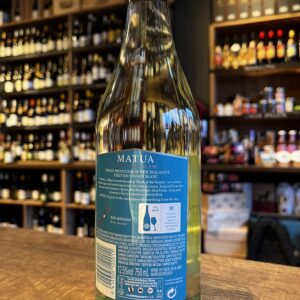
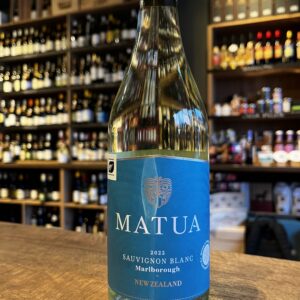 This wine represents the legend of Kupe tangling with a giant octopus who kept stealing all his fish off the hook. During the ensuing fight the beast's tentacles gouged out the Marlborough Sounds and Kupe cut out its eyes which he placed on two rocks known today as Nga Whatu ' The Eyes'. It’s hard to separate New Zealand and Sauvignon Blanc these days, but Matua were the first to put them together, over 40 years ago. You could say They've changed the way the world enjoys white wine. As the Head of the Family (the Maori translation of Matua) They have a tradition of telling stories as a way of passing on knowledge to the next generation. Their most famous winegrowing regions set the scene for some great legendary historical folklore. Wines match dishes from cooked salmon, lettuce, chicken and mushrooms.
This wine represents the legend of Kupe tangling with a giant octopus who kept stealing all his fish off the hook. During the ensuing fight the beast's tentacles gouged out the Marlborough Sounds and Kupe cut out its eyes which he placed on two rocks known today as Nga Whatu ' The Eyes'. It’s hard to separate New Zealand and Sauvignon Blanc these days, but Matua were the first to put them together, over 40 years ago. You could say They've changed the way the world enjoys white wine. As the Head of the Family (the Maori translation of Matua) They have a tradition of telling stories as a way of passing on knowledge to the next generation. Their most famous winegrowing regions set the scene for some great legendary historical folklore. Wines match dishes from cooked salmon, lettuce, chicken and mushrooms. -
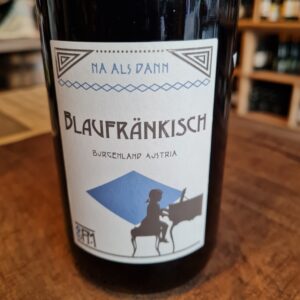 Blaufränkisch equals Austria. It is one of those typical, local, emerging grapes that have put Austria on the international wine market in recent years. Spicy nose with notes of ripe fruit such as currants and blackberries. The tannins are soft but present enough to structure the wine.All combines in a high-quality example of typical Blaufränkisch.
Blaufränkisch equals Austria. It is one of those typical, local, emerging grapes that have put Austria on the international wine market in recent years. Spicy nose with notes of ripe fruit such as currants and blackberries. The tannins are soft but present enough to structure the wine.All combines in a high-quality example of typical Blaufränkisch. -
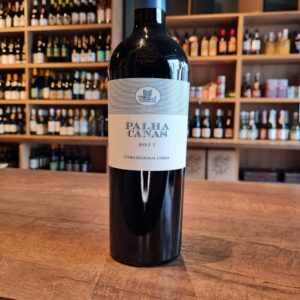 Aromatically very complex, it presents strong sensations of red fruits, jam and vanilla. Equally complex in the tasting, it evolutes to smooth velvety notes of red and ripe fruits, chocolate and oak ageing. Persistent and well-balanced aftertaste with tannins that evidence the structure of the wine and its longevity. Enjoy the Palha-Canas Tinto with hearty dishes from pork and beef, lamb and game. In addition, the wine goes perfectly with soft and hard cheese. You would have to stand on the terrace of the estate to understand why it is called Boavista (“fine view”). Your gaze would naturally wander over the vineyards which slope down into the valley in front of the house and then meet two hills on the opposite side where the lines of vines form an exciting geometrical pattern. It is a fine view indeed, this sight of the vineyards of Boavista. The Quinta de Boavista is situated right in the middle of the hills of the Estremadura wine-growing region, about fifty kilometres north of Lisbon. The close proximity of the nearby ocean provides for humidity and wind. The soil composition is a sandy clay. It is full of fossilized ocean deposits and right in front of the estate big petrified bones of a saurian were found which now adorn the terrace. The land has been owned for generations by the family of José Luis Oliveira da Silva. He is a banker by profession. For some years now he has focussed on wine-growing. He modernised the wine cellar, bought new barrels and recruited an able oenologist. He was among the first in Portugal who produced varietal wines from autochthonous grapes. The results are very exciting. The white Fernao Pires is a wine with attractive fruit aromas and with a distinct mineral note, the red Castelao and the red Tinta Roriz are wines that have concentration and a complex personality. This new generation of Portuguese wines gives you offhand inspiration.
Aromatically very complex, it presents strong sensations of red fruits, jam and vanilla. Equally complex in the tasting, it evolutes to smooth velvety notes of red and ripe fruits, chocolate and oak ageing. Persistent and well-balanced aftertaste with tannins that evidence the structure of the wine and its longevity. Enjoy the Palha-Canas Tinto with hearty dishes from pork and beef, lamb and game. In addition, the wine goes perfectly with soft and hard cheese. You would have to stand on the terrace of the estate to understand why it is called Boavista (“fine view”). Your gaze would naturally wander over the vineyards which slope down into the valley in front of the house and then meet two hills on the opposite side where the lines of vines form an exciting geometrical pattern. It is a fine view indeed, this sight of the vineyards of Boavista. The Quinta de Boavista is situated right in the middle of the hills of the Estremadura wine-growing region, about fifty kilometres north of Lisbon. The close proximity of the nearby ocean provides for humidity and wind. The soil composition is a sandy clay. It is full of fossilized ocean deposits and right in front of the estate big petrified bones of a saurian were found which now adorn the terrace. The land has been owned for generations by the family of José Luis Oliveira da Silva. He is a banker by profession. For some years now he has focussed on wine-growing. He modernised the wine cellar, bought new barrels and recruited an able oenologist. He was among the first in Portugal who produced varietal wines from autochthonous grapes. The results are very exciting. The white Fernao Pires is a wine with attractive fruit aromas and with a distinct mineral note, the red Castelao and the red Tinta Roriz are wines that have concentration and a complex personality. This new generation of Portuguese wines gives you offhand inspiration. -
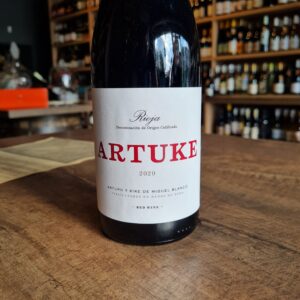 Made in a Beaujolais style, with the carbonic maceration method. This juicy ''Joven'' fresh fruited style of Rioja has zero oak influence as it ages in concrete tanks for 6 months. Farmed without any synthetic fertilizers or pesticides. Arturo Blanco was once asked what the philosophy at Bodegas Artuke was and he simply replied 'we are farmers'. The approach here is 100% focused on interpreting the family's 32 plots which are split between the villages of Baños de Ebro and Ábalos in Rioja Alavesa. Biodynamic techniques are employed in the vineyards and Arturo and Kike are also busy recovering old, ignored plots of ancient vines. Vinification is aimed at expressing the characteristics of the vineyard and quality of fruit above all else. The restrained use of oak and inclination towards different types/sizes of barrel, plus an unwillingness to adhere to the subscribed regimes for classification means that Artuke are precluded from using Crianza, Reserva and Gran Reserva designations on their wines. This mouth-watering red wine takes a relatively deep chill which makes it a versatile pairing with all types of food: tuna, pretty much anything made with zucchini, fried chicken, gooey cheese sandwiches, pizza, etc…
Made in a Beaujolais style, with the carbonic maceration method. This juicy ''Joven'' fresh fruited style of Rioja has zero oak influence as it ages in concrete tanks for 6 months. Farmed without any synthetic fertilizers or pesticides. Arturo Blanco was once asked what the philosophy at Bodegas Artuke was and he simply replied 'we are farmers'. The approach here is 100% focused on interpreting the family's 32 plots which are split between the villages of Baños de Ebro and Ábalos in Rioja Alavesa. Biodynamic techniques are employed in the vineyards and Arturo and Kike are also busy recovering old, ignored plots of ancient vines. Vinification is aimed at expressing the characteristics of the vineyard and quality of fruit above all else. The restrained use of oak and inclination towards different types/sizes of barrel, plus an unwillingness to adhere to the subscribed regimes for classification means that Artuke are precluded from using Crianza, Reserva and Gran Reserva designations on their wines. This mouth-watering red wine takes a relatively deep chill which makes it a versatile pairing with all types of food: tuna, pretty much anything made with zucchini, fried chicken, gooey cheese sandwiches, pizza, etc… -
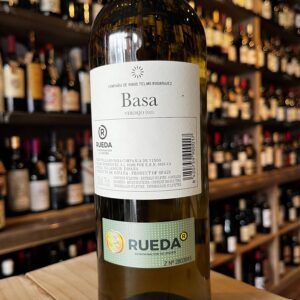
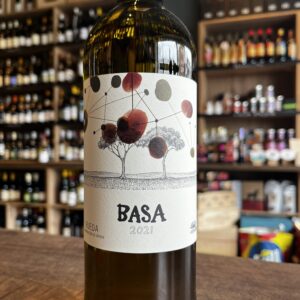 Telmo Rodriguez of Basque origin, studied wine at the Institute of Oenology in Bordeaux, before doing internships with Cos d’Estournel, Jean Louis Chave and Trevallon . He also worked in the vinification of wines from the family estate of Remelluri, in Rioja. Then, in 1990, with an investment of just a few thousand euros, he launched his own winery. He buys grapes to produce his first wines. His first plots of property did not arrive until 1997, in Rioja. Paradoxical for someone who was dying to explore new regions. One of the main principles of Telmo Rodriguez is that of respecting the Spanish tradition of cultivating the vine in goblet, because this method of managing the vine protects it from the great heat of Iberian vineyards. He is fiercely opposed to the fashion of trellising vineyards and only buys vines that respect his ideal. Telmo also works in biodynamics but, showing great common sense, he admits that he only does it for the respect of the land and that the mention of organic viticulture has no importance in his eyes. The important thing is that the result is a balanced and tasty wine. The name comes from the 40-year-old 'baso' or bush-trained vines that are planted on limestone-rich soils at over 700-meters elevation on a plateau along the Duero River. Soils are made of gravel from fluvial terraces, erosion slopes and glacis. Pairs great with comfort food, Tapas and Tortillas of all sorts
Telmo Rodriguez of Basque origin, studied wine at the Institute of Oenology in Bordeaux, before doing internships with Cos d’Estournel, Jean Louis Chave and Trevallon . He also worked in the vinification of wines from the family estate of Remelluri, in Rioja. Then, in 1990, with an investment of just a few thousand euros, he launched his own winery. He buys grapes to produce his first wines. His first plots of property did not arrive until 1997, in Rioja. Paradoxical for someone who was dying to explore new regions. One of the main principles of Telmo Rodriguez is that of respecting the Spanish tradition of cultivating the vine in goblet, because this method of managing the vine protects it from the great heat of Iberian vineyards. He is fiercely opposed to the fashion of trellising vineyards and only buys vines that respect his ideal. Telmo also works in biodynamics but, showing great common sense, he admits that he only does it for the respect of the land and that the mention of organic viticulture has no importance in his eyes. The important thing is that the result is a balanced and tasty wine. The name comes from the 40-year-old 'baso' or bush-trained vines that are planted on limestone-rich soils at over 700-meters elevation on a plateau along the Duero River. Soils are made of gravel from fluvial terraces, erosion slopes and glacis. Pairs great with comfort food, Tapas and Tortillas of all sorts -
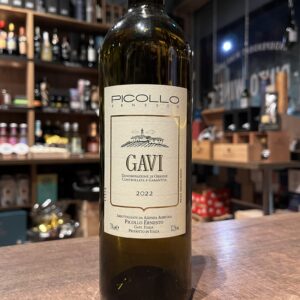 Picollo Gavi Ernesto is perched among the rolling hills that surround the town of Gavi. The climate here is much more mediterranean than in the north, benefiting from the constant maritime breezes, unique to the southern Piedmont. Picollo Ernesto’s vineyards sit near 260 meters above sea level in Rovereto di Gavi, one of the most prestigious area of the appellation. Our 16 hectares of vineyards are planted exclusively with Cortese, a hearty, high acid white varietal, perfectly suited for this area in northern Italy. Cortese thrives in difficult soil, dry climate, and full sun exposure, which Rovereto amply provides. Picollo’s vineyards are predominantly south-facing and the soils have a higher concentration of clay than marl, which allows for year-round water conservation, even in the peak of summer. Lorenzo Picollo founded the winery in 1945. The winemaking and day-to-day management was transferred to his son, Ernesto, and is now in the hands of his grandson, Gianlorenzo. Innovating along the way, Gianlorenzo continues to carry the family’s legacy forward with great success. Their lands are predominantly in the Rovereto zone, the historic Le Rive vineyards are over sixty years old instead their newest purchase of two hectares lies within the zone of Tassarolo. The grapes for all of Picollo’s wines are hand harvested. The winery itself has recently been modernized but the processes remain traditional, with sparing intervention in the winemaking and no artificial pesticides or herbicides used in the vineyards. With the intent of showcasing the Cortese in its purest form. All Gavi’s are fermented and aged exclusively in stainless steel. It is perfect with haute cuisine, ideal for fish dishes and aperitif
Picollo Gavi Ernesto is perched among the rolling hills that surround the town of Gavi. The climate here is much more mediterranean than in the north, benefiting from the constant maritime breezes, unique to the southern Piedmont. Picollo Ernesto’s vineyards sit near 260 meters above sea level in Rovereto di Gavi, one of the most prestigious area of the appellation. Our 16 hectares of vineyards are planted exclusively with Cortese, a hearty, high acid white varietal, perfectly suited for this area in northern Italy. Cortese thrives in difficult soil, dry climate, and full sun exposure, which Rovereto amply provides. Picollo’s vineyards are predominantly south-facing and the soils have a higher concentration of clay than marl, which allows for year-round water conservation, even in the peak of summer. Lorenzo Picollo founded the winery in 1945. The winemaking and day-to-day management was transferred to his son, Ernesto, and is now in the hands of his grandson, Gianlorenzo. Innovating along the way, Gianlorenzo continues to carry the family’s legacy forward with great success. Their lands are predominantly in the Rovereto zone, the historic Le Rive vineyards are over sixty years old instead their newest purchase of two hectares lies within the zone of Tassarolo. The grapes for all of Picollo’s wines are hand harvested. The winery itself has recently been modernized but the processes remain traditional, with sparing intervention in the winemaking and no artificial pesticides or herbicides used in the vineyards. With the intent of showcasing the Cortese in its purest form. All Gavi’s are fermented and aged exclusively in stainless steel. It is perfect with haute cuisine, ideal for fish dishes and aperitif -
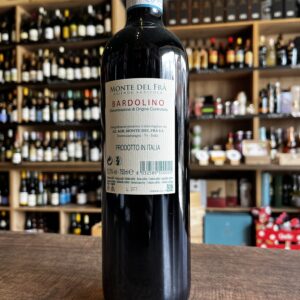
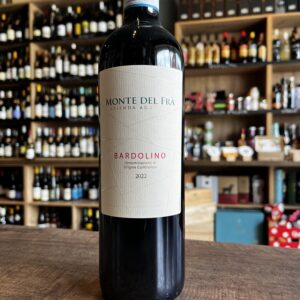 This wine is from the hills that are located in a Guyot at 100/150 meters above sea level, of morainic origin with calcareous, clayey, gravelly, sandy soil.From the municipality of Sommacampagna located southeast of Lake Garda.A well-balanced, fresh and easy-drinking style dry and rounded red wine. Delicately fruity and fragrant, with notes of cherries, strawberries, raspberries and red currants as well as hints of spices. Recommended with light snacks, cold cuts, light meals, tapas, pasta and fish in general (particularly freshwater fish).
This wine is from the hills that are located in a Guyot at 100/150 meters above sea level, of morainic origin with calcareous, clayey, gravelly, sandy soil.From the municipality of Sommacampagna located southeast of Lake Garda.A well-balanced, fresh and easy-drinking style dry and rounded red wine. Delicately fruity and fragrant, with notes of cherries, strawberries, raspberries and red currants as well as hints of spices. Recommended with light snacks, cold cuts, light meals, tapas, pasta and fish in general (particularly freshwater fish). -
Out of stock
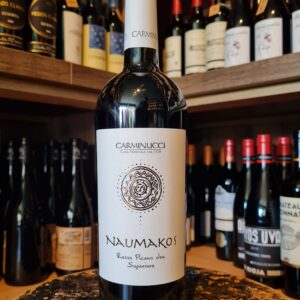 The Carminucci company, with its 90 years of history, is inserted in the wonderful wine landscape of the Marche, a region that gives powerful emotions thanks to its landscapes and a geographical conformation that allows it to have very particular climatic excursions. Kissed by the Adriatic and pampered by the hills, this region, rich in native vines and wine culture, offers a wine obtained from a blend rich in charm such as Rosso Piceno, which we tasted in its "superior" version. Montepulciano, combined with Sangiovese, ages in small and large barrels to bring to the table a product with marked minerality and softness, strength and structure, always sweetened by fresh notes that make it unique in its characteristics. The color is rich in anthocyanins, the light is unable to penetrate the richness of color of this red wine, but the first impact on the nose makes it less austere than you might imagine. Ample in its aromas of red fruit and slightly spicy in sweet notes, Carminucci's Rosso Piceno is a pleasant wine from the first sip for its authenticity and balance. If you leave it in your mouth for a moment, warm Mediterranean flavors emerge combined with a pleasant note of licorice, a balanced alcohol that has a strong but never invasive structure. Its harmony is given by the set of sensations and gustatory touches, a frank and very balanced wine, it combines the sapidity of the area with an acidity that leads it to be a long-lived wine with excellent resistance over time. Excellent with red meats or game.
The Carminucci company, with its 90 years of history, is inserted in the wonderful wine landscape of the Marche, a region that gives powerful emotions thanks to its landscapes and a geographical conformation that allows it to have very particular climatic excursions. Kissed by the Adriatic and pampered by the hills, this region, rich in native vines and wine culture, offers a wine obtained from a blend rich in charm such as Rosso Piceno, which we tasted in its "superior" version. Montepulciano, combined with Sangiovese, ages in small and large barrels to bring to the table a product with marked minerality and softness, strength and structure, always sweetened by fresh notes that make it unique in its characteristics. The color is rich in anthocyanins, the light is unable to penetrate the richness of color of this red wine, but the first impact on the nose makes it less austere than you might imagine. Ample in its aromas of red fruit and slightly spicy in sweet notes, Carminucci's Rosso Piceno is a pleasant wine from the first sip for its authenticity and balance. If you leave it in your mouth for a moment, warm Mediterranean flavors emerge combined with a pleasant note of licorice, a balanced alcohol that has a strong but never invasive structure. Its harmony is given by the set of sensations and gustatory touches, a frank and very balanced wine, it combines the sapidity of the area with an acidity that leads it to be a long-lived wine with excellent resistance over time. Excellent with red meats or game. -
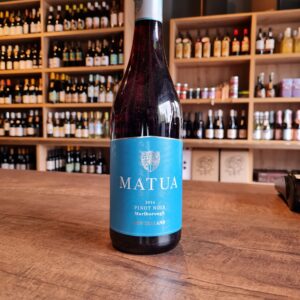 The name Matua, in New Zealand's native Maori language, means "head of the family," an appropriate title given this winery's instrumental role in developing Sauvignon Blanc into what is now New Zealand's most acknowledged wine varietal. You see there’s a couple of regions around the globe that planted Pinot Noir, that have really mastered it and New Zealands' Marlborough is indisputably one of those. It’s funny what a little perseverance does, and from their ragged tin shed in 1974, Bill and Ross Spence began to change the very foundation of wine in not just Marlborough, but New Zealand. They realized that Pinot Noir adapted exceptionally well to the well-drained alluvial soils of Marlborough and it’s unique climate. With the perfect amount of sunshine each day balanced out by cool evenings they struck Pinot Noir gold and have been developing a killer selection ever since. Matua have mastered the perfect balance of fruit-forward freshness with a touch of dry spice, a staple trait of the Marlborough Pinot Noir. You can expect generous aromas of freshly picked strawberries and red with a little ripe plum thrown into the mix. When taking a sip it’s the soft redcurrants, strawberries and cherries that jump out, brought together by a subtle spice, light tobacco and soothing dry earth. A touch of oak gives just enough complexity to enhance the flavors of this incredible wine. Highly Recommended
The name Matua, in New Zealand's native Maori language, means "head of the family," an appropriate title given this winery's instrumental role in developing Sauvignon Blanc into what is now New Zealand's most acknowledged wine varietal. You see there’s a couple of regions around the globe that planted Pinot Noir, that have really mastered it and New Zealands' Marlborough is indisputably one of those. It’s funny what a little perseverance does, and from their ragged tin shed in 1974, Bill and Ross Spence began to change the very foundation of wine in not just Marlborough, but New Zealand. They realized that Pinot Noir adapted exceptionally well to the well-drained alluvial soils of Marlborough and it’s unique climate. With the perfect amount of sunshine each day balanced out by cool evenings they struck Pinot Noir gold and have been developing a killer selection ever since. Matua have mastered the perfect balance of fruit-forward freshness with a touch of dry spice, a staple trait of the Marlborough Pinot Noir. You can expect generous aromas of freshly picked strawberries and red with a little ripe plum thrown into the mix. When taking a sip it’s the soft redcurrants, strawberries and cherries that jump out, brought together by a subtle spice, light tobacco and soothing dry earth. A touch of oak gives just enough complexity to enhance the flavors of this incredible wine. Highly Recommended -
Out of stock
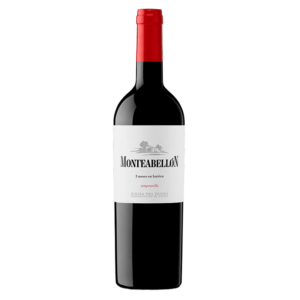 This attractive wine has its origin in the coolest vineyards located near the Douro River. The soil is sandy-loam with a slight gravel content. This gives it a very characteristic freshness that, combined with its aging in the barrel for 5 months (50% French and 50% American), gives rise to a wine with great personality and marked fruity nuances. Intense, bright cherry color. Very intense aroma with marked fruity sensations of blackberry and blueberries perfectly integrated with a quality wood that surrounds everything. Good structure and good fruity expression on the palate, powerful and with ripe tannins. An Oak from Ribera del Duero that you cannot miss.
This attractive wine has its origin in the coolest vineyards located near the Douro River. The soil is sandy-loam with a slight gravel content. This gives it a very characteristic freshness that, combined with its aging in the barrel for 5 months (50% French and 50% American), gives rise to a wine with great personality and marked fruity nuances. Intense, bright cherry color. Very intense aroma with marked fruity sensations of blackberry and blueberries perfectly integrated with a quality wood that surrounds everything. Good structure and good fruity expression on the palate, powerful and with ripe tannins. An Oak from Ribera del Duero that you cannot miss. -
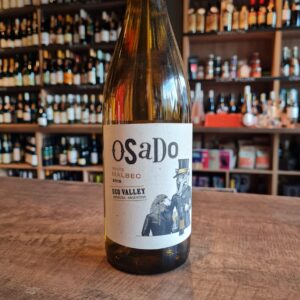 Being Osado or daring, is not being fearless, or not having second thoughts. Being Osado means living without prejudice, being free of any obligations and building your own way of life. Malbec brings a strong posture to this white wine and its aftertaste is long, fresh and clean. The grapes are harvested by hand in the cool of the morning, pressed under very low pressure so that no color has come off the grapes. The wine has been cold-consumed for 15 days and then matured in steel tanks on top of the precipitate for five months. This delicious wine is a very versatile food wine accompanied by grilled fish or asparagus, for example, and is also suitable as an aperitif as such. Grapes: Malbec 100%.
Being Osado or daring, is not being fearless, or not having second thoughts. Being Osado means living without prejudice, being free of any obligations and building your own way of life. Malbec brings a strong posture to this white wine and its aftertaste is long, fresh and clean. The grapes are harvested by hand in the cool of the morning, pressed under very low pressure so that no color has come off the grapes. The wine has been cold-consumed for 15 days and then matured in steel tanks on top of the precipitate for five months. This delicious wine is a very versatile food wine accompanied by grilled fish or asparagus, for example, and is also suitable as an aperitif as such. Grapes: Malbec 100%. -
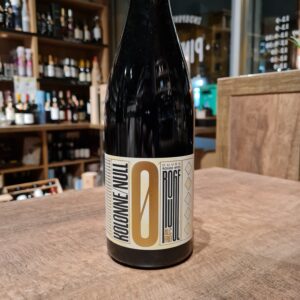 In the middle of the Spanish plateau "Meseta de Ocana" not far from Toledo, three friends founded their own winery in 1999: Margarita Madrigal, Alexandra Schmedes and Gonzalo Rodriguez. The revival of regional traditions became the basis of their way of working, which is characterized by the ecological cultivation of 35 hectares of native grape varieties and the extremely continental climate. Together with Alexandra, the first Spanish red wine, Cuvée Rouge No.2, was developed. This velvety, grippy taste makes it a must-drink on a barbecue evening, with risotto and pasta. The perfect non-alcoholic red wine for all those who love it wild and unbridled. Bring your Spain vacation home!
In the middle of the Spanish plateau "Meseta de Ocana" not far from Toledo, three friends founded their own winery in 1999: Margarita Madrigal, Alexandra Schmedes and Gonzalo Rodriguez. The revival of regional traditions became the basis of their way of working, which is characterized by the ecological cultivation of 35 hectares of native grape varieties and the extremely continental climate. Together with Alexandra, the first Spanish red wine, Cuvée Rouge No.2, was developed. This velvety, grippy taste makes it a must-drink on a barbecue evening, with risotto and pasta. The perfect non-alcoholic red wine for all those who love it wild and unbridled. Bring your Spain vacation home! -
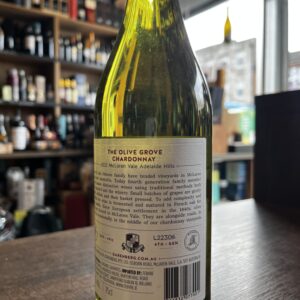
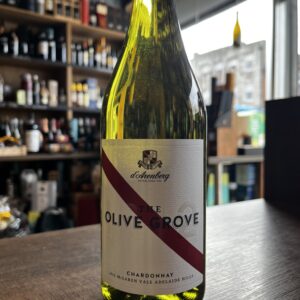 Since 1912 the Osborn family have tended vineyardsin Mclaren Vale, South of Australia. Today fourth generation family member Chester(absolutely bonkers of a guy, draws a room in and within 2 minutes has your attention), makes distintive wines using traditional methods both in the vineyards and the winery. The name comes from European settlements that arised in the 1840’s, and with them olive trees have thrived in McLaren Vale. They are alongside roads, in gardens and occasionally, block their harvesters from doing a fully mechanical job! Perfect with Antipasti, asparagus, chicken and fish
Since 1912 the Osborn family have tended vineyardsin Mclaren Vale, South of Australia. Today fourth generation family member Chester(absolutely bonkers of a guy, draws a room in and within 2 minutes has your attention), makes distintive wines using traditional methods both in the vineyards and the winery. The name comes from European settlements that arised in the 1840’s, and with them olive trees have thrived in McLaren Vale. They are alongside roads, in gardens and occasionally, block their harvesters from doing a fully mechanical job! Perfect with Antipasti, asparagus, chicken and fish -
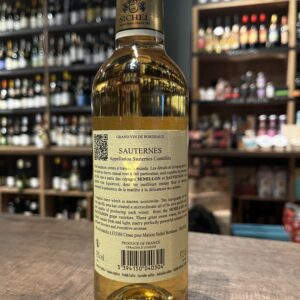
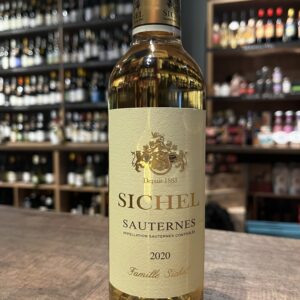 This is a declassified wine from a top Chateau in Sauternes...shhh, they dont want you to know their name! or...just keep reading Maison Sichel is a Bordeaux based, family owned and run negociant of six generations. The Sichel family have been a sugnificant prescence in Bordeaux since 1883 and have continued to expand operations by purchasing several properties in Bordeaux including Chateau Angludet and Chateau Argaden. The Sichel family also joined with three other family in 1938 to purchase the now legendary Chateau Palmer. Maison Sichel continued to expand their operations outside of Bordeaux with Chateau Trillol in Corbieres and have several high quality own label wines such as the Sichel Sauternes and the Sichel Margaux. The Sichekl Vineyards are situated some 40 kilometers south east of Bordeaux, between the Garonne river and the Landes forest to the south. A blend of 80% Semillon, 15% Sauvignon Blanc and 5% Muscadelle from 50 year old vines where Botrytis is encouraged to dehydrate the grapes. This Sauterne has been aged for 10 to 12 months.
This is a declassified wine from a top Chateau in Sauternes...shhh, they dont want you to know their name! or...just keep reading Maison Sichel is a Bordeaux based, family owned and run negociant of six generations. The Sichel family have been a sugnificant prescence in Bordeaux since 1883 and have continued to expand operations by purchasing several properties in Bordeaux including Chateau Angludet and Chateau Argaden. The Sichel family also joined with three other family in 1938 to purchase the now legendary Chateau Palmer. Maison Sichel continued to expand their operations outside of Bordeaux with Chateau Trillol in Corbieres and have several high quality own label wines such as the Sichel Sauternes and the Sichel Margaux. The Sichekl Vineyards are situated some 40 kilometers south east of Bordeaux, between the Garonne river and the Landes forest to the south. A blend of 80% Semillon, 15% Sauvignon Blanc and 5% Muscadelle from 50 year old vines where Botrytis is encouraged to dehydrate the grapes. This Sauterne has been aged for 10 to 12 months. -
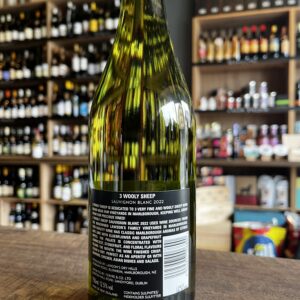
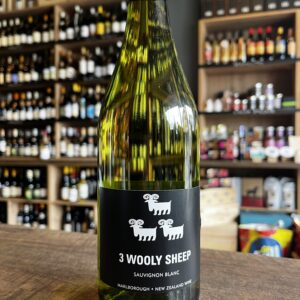 This quality wine has classic Marlborough aromas of citrus and limes with elderflower and grapefruit notes. The palate is concentrated with lemon zest, stonefruit and floral flavours filling the mouth. The wine finishes crisp, clean and dry. Perfect as an aperitif or with seafood, chicken, Asian dishes and salads.
This quality wine has classic Marlborough aromas of citrus and limes with elderflower and grapefruit notes. The palate is concentrated with lemon zest, stonefruit and floral flavours filling the mouth. The wine finishes crisp, clean and dry. Perfect as an aperitif or with seafood, chicken, Asian dishes and salads. -
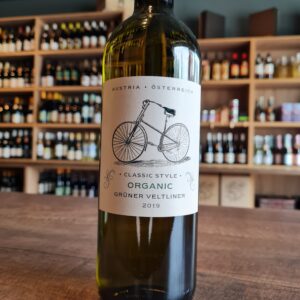 All Sepp Moser wines have been organic (and all estate wines biodynamic) since 2007. The Sepp Moser Estate comprises of 50 acres of vineyards in two prominent wine regions; Kremstal and Neusiedlersee. Now run by Sepp's son Nikolaus, he produces an international range of varieties as well as the ever more important local varieties of Gruner Veltliner and Riesling in the Kremstal. Delicate aromas of pear, kiwi, apricot and white spice. On the palate stone fruit flavours and white pepper lead to a gently textured, mineral and citrus finish. Great with fish, Chicken or light dishes in general. Lovely on its own on hot summer day
All Sepp Moser wines have been organic (and all estate wines biodynamic) since 2007. The Sepp Moser Estate comprises of 50 acres of vineyards in two prominent wine regions; Kremstal and Neusiedlersee. Now run by Sepp's son Nikolaus, he produces an international range of varieties as well as the ever more important local varieties of Gruner Veltliner and Riesling in the Kremstal. Delicate aromas of pear, kiwi, apricot and white spice. On the palate stone fruit flavours and white pepper lead to a gently textured, mineral and citrus finish. Great with fish, Chicken or light dishes in general. Lovely on its own on hot summer day -
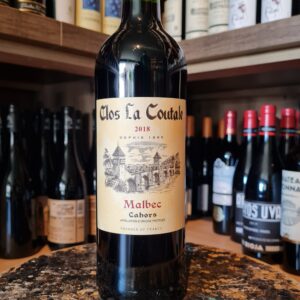 Malbec is the main grape in the legendary ‘Black wine of Cahors’. Way before Argentina made the varietal ‘famous’, Malbec – though in this region it is known as Côt or Auxerrois. – was making long-lived wines from Cahors – the 1959 Clos La Coutale is still drinking superbly. Clos La Coutale is a benchmark of the Cahors region and has a history of producing some of the finest and longest-lived wines of the region. Blackcurrants, blackberry's and prune notes followed by a soft and elegant palate that has an enticing note of vanilla. This Clos La Coutale wine is matured in barrels and wooden casks for one year in order to obtain a good balance between tannins and fruit. Organic and true gem at this price point.
Malbec is the main grape in the legendary ‘Black wine of Cahors’. Way before Argentina made the varietal ‘famous’, Malbec – though in this region it is known as Côt or Auxerrois. – was making long-lived wines from Cahors – the 1959 Clos La Coutale is still drinking superbly. Clos La Coutale is a benchmark of the Cahors region and has a history of producing some of the finest and longest-lived wines of the region. Blackcurrants, blackberry's and prune notes followed by a soft and elegant palate that has an enticing note of vanilla. This Clos La Coutale wine is matured in barrels and wooden casks for one year in order to obtain a good balance between tannins and fruit. Organic and true gem at this price point. -
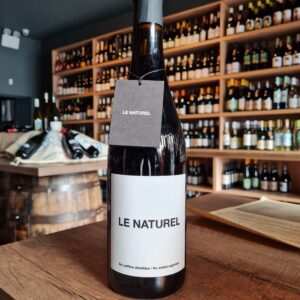 Le Naturel lives up to its name, it is a wine in which the Garnacha is expressed with great openness. On the nose aromas of blackberries and violets appear, while in the mouth it has a good attack of fresh fruit, typical of high altitude vineyards.It is a natural wine, without added sulfites, which also has the certificate of organic and vegan wine. With the aim of minimal intervention (in the field and in the winery) we found in Bodegas Aroa - Le Naturel a specimen of pure and enjoyable Grenache. Specially designed for consumption soon it is open and not for storage. Bodegas Aroa (Vintae group) is located in Zurucuáin, in the heart of the Yerri Valley , sheltered by the Urbasa and Andía Sierras. This winery is one of the pioneers in Navarra in its commitment to the recovery of organic farming practices .
Le Naturel lives up to its name, it is a wine in which the Garnacha is expressed with great openness. On the nose aromas of blackberries and violets appear, while in the mouth it has a good attack of fresh fruit, typical of high altitude vineyards.It is a natural wine, without added sulfites, which also has the certificate of organic and vegan wine. With the aim of minimal intervention (in the field and in the winery) we found in Bodegas Aroa - Le Naturel a specimen of pure and enjoyable Grenache. Specially designed for consumption soon it is open and not for storage. Bodegas Aroa (Vintae group) is located in Zurucuáin, in the heart of the Yerri Valley , sheltered by the Urbasa and Andía Sierras. This winery is one of the pioneers in Navarra in its commitment to the recovery of organic farming practices .


